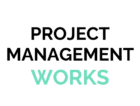Change is essential to project management. Whether it refers to a shift in the scope of the project, the implementation of a new technology or an alteration in the structure of the team, projects are essentially dynamic. Whilst there is often overt opposition, it is often clear that a project manager will find themselves fighting with passive resistance. This is a subtle and often less talked about reluctance that can be as damaging to a project’s momentum. It can undermine a project at a slow, determined pace and hinder any hope of the successful adoption of change.
How does it happen?
Passive resistance can occur in a number of ways and can all too often be disguised as something completely different. Deadlines are pushed as a result of delayed feedback, but it can also appear as a lack of engagement when it comes to crucial discussions. This is the non-compliance that is all too quiet when it comes to new processes or the constant “forgetting” that occurs around key tasks. Fiery objections demand immediate attention whilst passive resistance can be a much slower burn. It is still as damaging though; it erodes the timeline of projects and team morale from within. Plus, it can be a while before the impact can be fully realised.
Why does passive resistance occur?
It is important to understand the root causes of any passive resistance as the first step in addressing it effectively. There are a number of things that this can stem from.
Fear of the unknown
Change can introduce uncertainty. Some people can be apprehensive about how changes may affect their roles, responsibilities, or even the security of their job. This fear can manifest as withdrawal as opposed to direct confrontation.
Lack of understanding
If the reasoning behind change isn’t communicated or understood clearly, stakeholders may passively resist because of a lack of buy-in or a perception that the change is not needed or poorly thought out
Feeling overwhelmed
Constant changes can result in change fatigue. Individualscan passively resist because they feel overwhelmed by a large number of adjustments that they are expected to undertake.
Loss of control
Changes have the capacity to disrupt routines and processes that are established, leading individuals to feel they have lost control over their work. Passive resistance is a subconscious way of trying to regain some form of agency.
Unresolved concerns
In some instances, individuals can have concerns regarding the change but might be hesitant to voice them directly because of fear of conflict or a belief that their opinions don’t carry value.
Recognising the slide into passive resistance
If you want to identify passive resistance, this requires a degree of keen observation and also a willingness to look past more overt behaviour. There are a number of tell-tale signs that it is important to look out for. These include delayed or incomplete feedback, a lack of engagement when it comes to meetings and forgetting or missing any of the deadlines as a result of the change.
An increase in absenteeism or presenteeism, seen through an increase in sick days or a lack of productivity can also be a subtle sign to look out for. So too can subtle negative comments or humour related to the change. When someone is resisting change, you may also find them sticking rigidly to their old ways of working. They may prefer old tools they are used to over new ones even though the latter can offer so much more. An increase in errors or a decrease in the quality of the work being produced can also be seen. There might be errors which could suggest a lack of commitment or focus.
Strategies for addressing passive resistance
There are nuanced and empathic approaches that can be taken when it comes to addressing passive resistance. It is important to avoid a direct approach as this can often backfire. It has a tendency to result in defensiveness and further resistance. There are other strategies that can be considered.
Enhance communication and transparency
Make sure that the rationale behind any change is communicated clearly and consistently. Address possible concerns and provide plenty of opportunities for questions and feedback in an environment that is safe and feels open. Highlight the benefits of the change not just for individuals but also for the project as a whole.
Actively seek and value input
Create channels for individuals so they can voice their concerns and suggestions without no fear of reprisal. This might mean having one-on-one conversations, anonymous feedback mechanisms, or even conducting Q&A sessions. Listen actively to their perspectives and make sure that you demonstrate that their input is valued.
Build understanding and buy-in
Make time to explain all changes thoroughly and address any gaps in knowledge. Provide training and support in order to help individuals adapt to any new processes and tools. When the “why” behind changes is understood, individuals can feel equipped to navigate them and resistance can often diminish.
Involve stakeholders in the process
When possible, involve passively resistant stakeholders in the planning and implementation of a change. This offers a sense of ownership and can significantly help to increase their buy-in whilst reducing passive resistance.
Identify and address underlying concerns
Attempt to understand the root causes of any passive resistance. There might be genuine fears or concerns that should be addressed. A private conversation can sometimes uncover underlying issues that can alleviate resistance once acknowledged and addressed.
Break down changes into smaller, manageable steps
When faced with too much change at once, its no wonder people can struggle. This can fuel passive resistance. Break down any changes into smaller, more digestible blocks that have clear milestones and goals that are achievable.
Recognise and reward positive adaptation
Acknowledge and also celebrate those individuals and teams who are actively embracing new changes. When you publicly recognise their efforts, it can help to encourage others to embrace change.
Lead by example
A key aspect of the APM project management approach is that your attitude towards the change will have a significant influence on how the team responds. You should demonstrate enthusiasm and commitment to any new ways of working if you want your team to be comfortable with it.
Monitor and provide constructive feedback
Continue to monitor both engagement and progress that is caused by change. It is also important to offer timely and constructive feedback, which should focus on desired behaviours and outcomes rather than making criticisms of passive resistance directly.
Be patient and persistent
It can take time to overcome passive resistance and does mean you may need to put in consistent effort. It is important to remain patient and continue to communicate effectively. You should also continually reinforce both the benefits and the expectations of the change.
Passive resistance can often be silent, which can be a significant problem for project success. By developing the ability to recognise the more subtle signs, thus implementing proactive and empathetic strategies, a project manager can bring reluctant stakeholders on board. This will also help to foster a more collaborative environment, and also help to navigate project changes in a more effective way.

